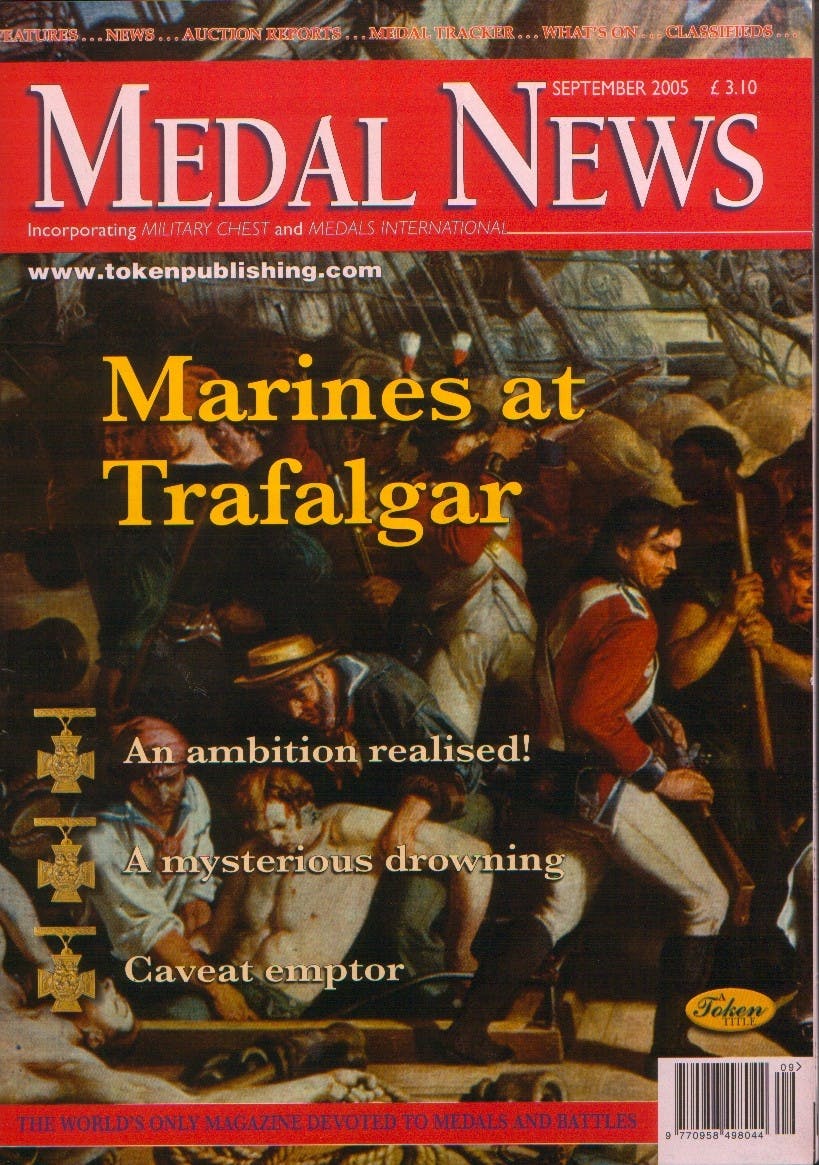Vive La Difference
Volume 43, Number 8, September 2005
Having recently returned from another successful Orders and Medals Society of America (OMSA) convention in Atlanta, Georgia we were once again struck by a number of differences between the hobby in the UK and that “across the pond”. The most notable difference comes with the diversity of medals collected. Whilst a UK fair would comprise table after table of British Medals with the odd “foreign” decoration thrown in now and again, the U.S collectors are far more varied in their tastes. Of course American medals abounded but so too did Polish, Russian, Bulgarian, French, German and of course British. The latter you can perhaps understand, after all a great number of Americans have British Ancestry and an interest in our history, and with the large number of Canadians attending the convention any groups with a Northern American pedigree were eagerly sought after. With most non-British/Commonwealth medals not named it is easy to see why even the “lowly” British World War One singles attract so much attention, the research possibilities being so much greater, but at OMSA the trade in non-British, and non-American is far greater than most Brits would ever believe – could such a trend catch on here? It’s possible if course, but far less likely. What we “over here” tend to forget is that not every American is from British stock and whilst the majority may share our language they don’t necessarily share our history. The country has been a veritable melting pot of immigrants over the years and whilst America may well have been colonised by the British, the intervening decades have seen millions from Western and Eastern Europe arrive in search of a better life (this leaving aside those with African Ancestry, many of whose forefathers had no choice in the matter). This has led to today’s medal market in the U.S being a much more diverse one than in the U.K. - after all why would an American who’s father fled the Communist Regime in Poland or whose Grandparents realised that Stalin wasn’t such a nice guy after all be interested in a pair of Medals awarded to Tommy Atkins of the Lancashire Fusiliers? In Britain the vast majority of collectors have ancestors who, at some point in the family history, would have fought and maybe died in British or Empire regiments, we can, to a certain extent identify with the people who’s medals we collect. For American collectors there is just as much history in the family, just as much chance to identify with the recipients – it’s just spread over a far larger geographical area! “Foreign” collecting may well increase in popularity over here but until we see our population with the same wide variety as can be found in the U.S it is always going to be a smaller part of the hobby. The other thing we noted at OMSA was, sadly, the number of absentees this year. We sat down with Dean Veramakis, the OMSA President and just off the top of our heads reeled off a dozen or more people not in attendance, mainly through ill health. It is a sad but true fact that the OMSA membership is an ageing one and every year a few more find the journey too much to make (the convention is held in a different State every year, this year it was in Georgia in the South East next year it’s in Phoenix in the South West, previously it’s been in Philadelphia, Cincinnati, Chicago and Northern California - giving everyone a chance to attend but meaning the trip to get there can be an arduous one for some). The OMSA committee are aware of this and would dearly love to change things but aren’t sure how, at first we were in full sympathy with them, agreeing that this was indeed an older man’s hobby and it would be good to attract some “young blood” – then we realised that in the UK at least, it isn’t like that any more and “young blood” isn’t in fact lacking at all. Certainly it isn’t a hobby for teenagers, or even those in their early twenties – the sheer cost of medals has seen to that, but just stop and think about the last medal fair you went to, or the last dealer you spoke with. Far from this hobby being the preserve of the retired serviceman it once was now there are many, collectors and dealers alike, in their late twenties, thirties and early forties and if the completed surveys (MEDAL NEWS August 2005) are anything to go by they are no longer in the minority. How did this happen in Britain and yet hasn’t in the States? It’s possible that the surge in “Family History” enthusiasts has something to do with it or it could simply be a cyclical thing. Ten years ago medal collecting wasn’t really for anyone under forty-five, now it’s becoming more popular than ever amongst those ten, even twenty years younger than that. Will the same thing happen Stateside? If the OMSA committee’s efforts are anything to go by then yes – they are keen to attract as many new collectors as possible and we wish them all the very best in their recruitment drive!
Order Back Issue
You can order this item as a back issue, simply click the button below to add it to your shopping basket.

